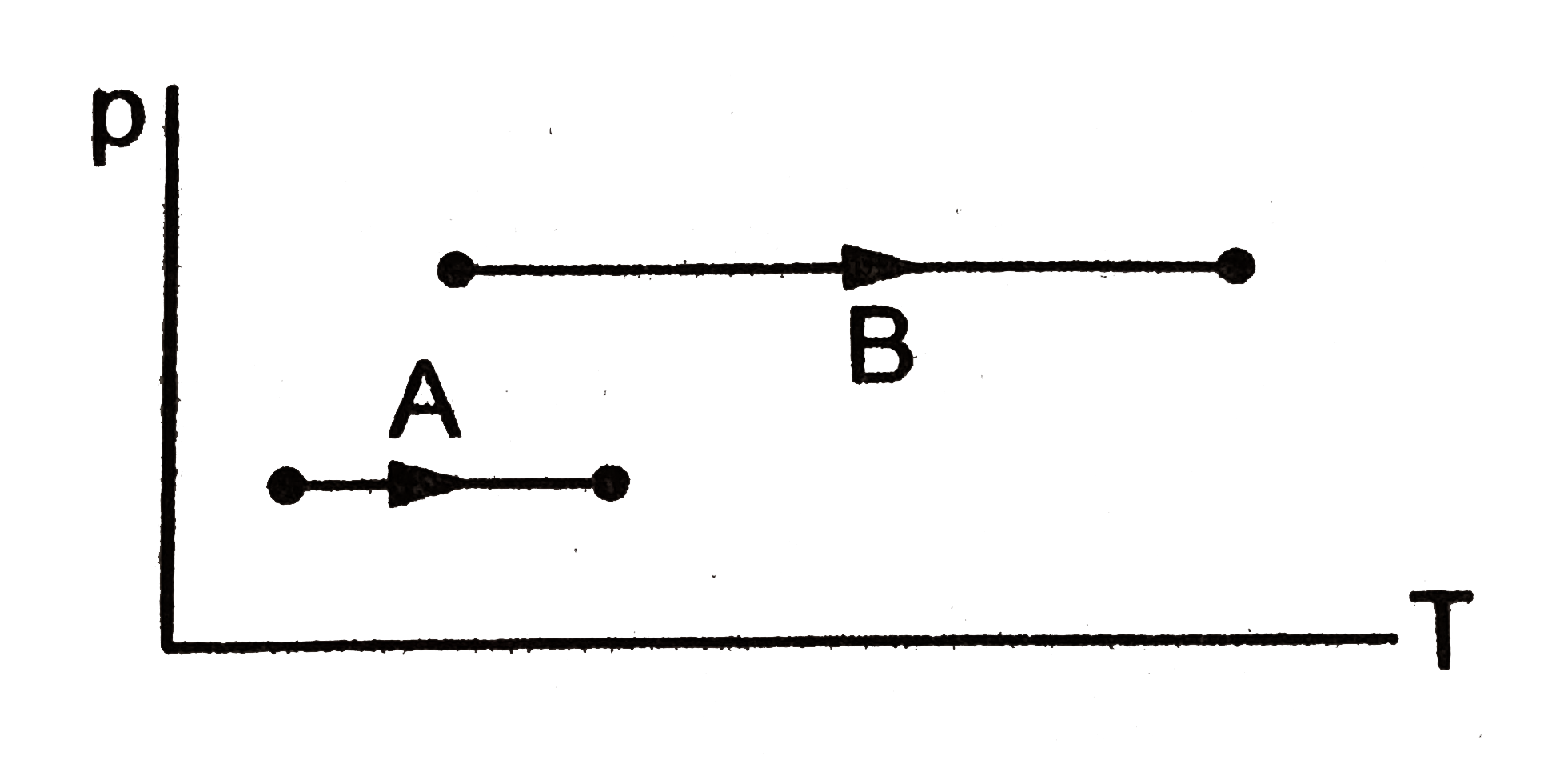A gas is enclosed in a cylinder with a movable frictionless piston. Its initial thermodynamic state at pressure Pi=105 Pa and volume Vi=10−3m3 changes to a final state at Pf=(1/32)×105PaandVf=8×10−3m3 in an adiabatic quasi-static process, such that P3V3=constant. Consider another thermodynamic process that brings the system form the same initial state to the same final state in two steps: an isobaric expansion at Pi followed by an isochoric (isovolumetric ) process at volume Vr. The amount of heat supplied to the system i the two-step process is approximately
112 J
294 J
588 J
813 J
The correct Answer is:C
Since, γ=53 (monoatomic gas)
From first law of thermodynamics - ΔQ=W+ΔU
⇒W=PiΔV=700J
ΔU=nCvΔT=32[PfVf–PiVi]=−9008J
ΔQ=W+ΔU=588J
Similar Questions
Consider two processes on a system as shown in figure. The volumes in the initial states are the same in the two processes and the volumes in the final states are also the same. Let ΔW1andΔW2 be the work by the system in the processes A and B respectively.

View SolutionConsider two processes on a system as shown in figure. The volumes in the initial states are the same in the two processes and the volumes in the final states are also the same. Let ΔW1 and ΔW2 be the work by the system in the processes A and B respectively.

View SolutionConsider two processes on a system as shown in figure.
The volumes in the initial states are the same in the two processes and the volume in the final states are also the same.Let ΔW1 and ΔW2 be the work done by the system in the processes A and B respectively.

View SolutionOne mole of helium is adiabatically expanded from its initial state (p_i, V_i, T_i) to its final state (p_f, V_f, T_f) . The decrease in the internal energy associated with this expansion is equal to
View SolutionConsider two processes on a system as shown in figure.
The volumes in the initial states are the same in the two processes and the volume in the final states are also the same.Let ΔW1 and ΔW2 be the work done by the system in the processes A and B respectively.

View SolutionPi,Viare initial pressure and volumes and Vf is final volume of a gas in a thermodynamic process respectively. If PVn= constant, then the amount of work done by gas is:(γ=Cp/Cv). Assume same, initial states & same final volume in all processes.
View SolutionA gas is enclosed in a cylinder with a movable frictionless piston. Its initial thermodynamic state at pressure Pi=105 Pa and volume Vi=10−3m3 changes to a final state at Pf=(1/32)×105PaandVf=8×10−3m3 in an adiabatic quasi-static process, such that P3V3=constant. Consider another thermodynamic process that brings the system form the same initial state to the same final state in two steps: an isobaric expansion at Pi followed by an isochoric (isovolumetric ) process at volume Vr. The amount of heat supplied to the system i the two-step process is approximately
View SolutionConsider two processes on a system as shown in fig. The volume in the initial states are the same in the two processes and the volumes in the final states are also the same. Let triangleW_(1) and triangleW_(2) be the work done by the system in the processes A and B respectively.
View Solution

